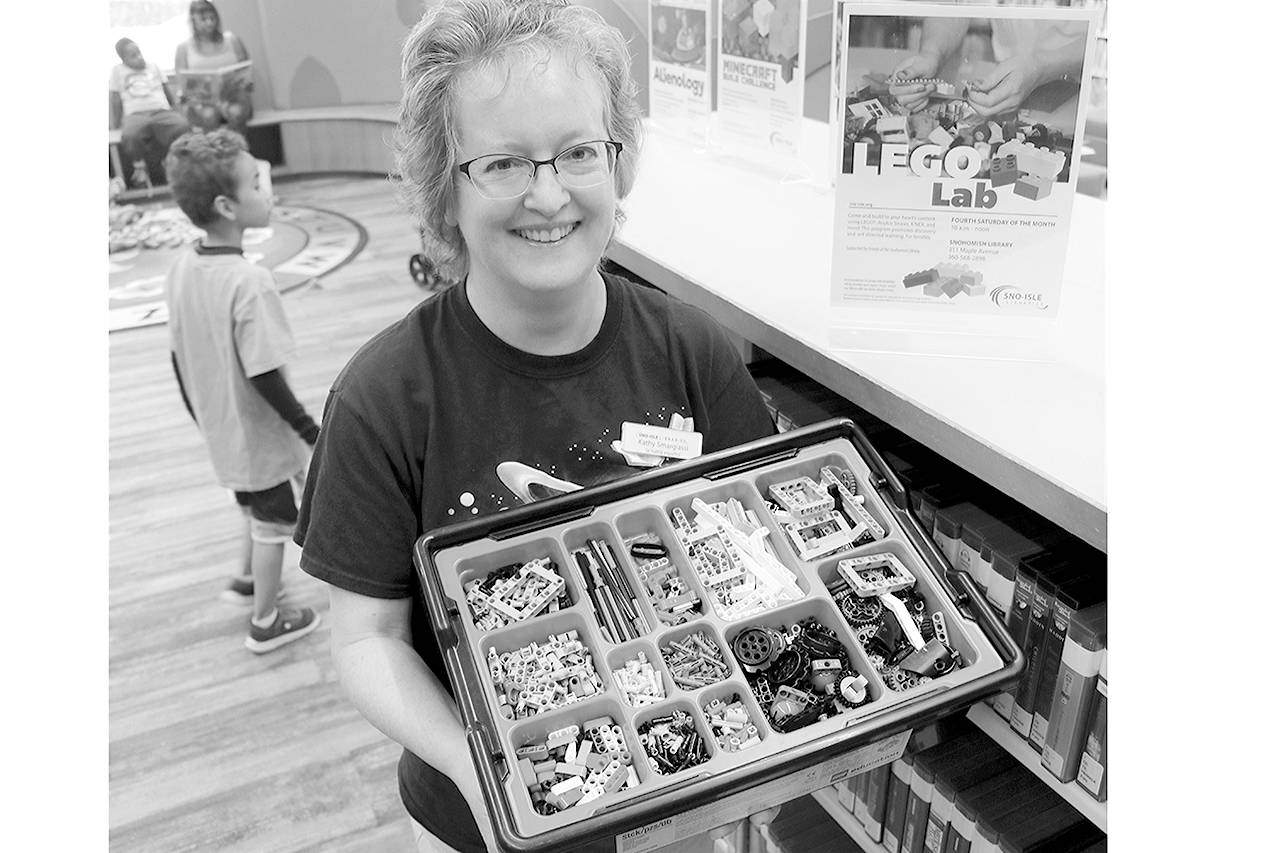Kathy Smargiassi has many strengths as a children’s librarian.
Until a few years ago though, robotics wasn’t one of them.
Smargiassi was working at the Marysville Library, when she was put in charge of the LEGO® Club and challenged to expand the library offerings to include a robotics component using LEGO Mindstorms® kits.
“I was surprised because I had zero background in robotics,” Smargiassi said.
Besides the familiar plastic blocks that middle-aged parents played with long ago, LEGO Mindstorms use a variety of sensors, gears, wheels, motors and a programmable controller that make small robots follow specific commands. Users can write the command codes on a tablet or laptop.
Smargiassi and assistant library manager Jill Wubbenhorst received a grant. Smargiassi learned how to build some robots and explored how various software coding commands control the LEGO hardware. She taught other librarians how Mindstorms worked.
Smargiassi started monthly LEGO Mindstorms meetings in addition to the regular Lego Club. Eventually, she led a three-week series to build a more-complex robot and challenged four teams to each build a robot that could sort items by color.
In 2016, she and Marysville teen librarian Marta Murvosh organized a Robot Rally that attracted more than 50 participants, including robotics teams from Cedarcrest Middle School and Lakewood High School, and engineering students from Washington State University.
Smargiassi, now in Snohomish, said Mindstorms programs make students think and analyze. “I would challenge them to make their robot stop on a color, or sense something in front of it and not crash,” she said.
One of the kids Smargiassi got started is Minoru Madero, now 11.
“He’s always loved building things,” said Minoru’s mom, Gaby Madero. “He loves figuring out how things work and how to put things back together. He asked and asked and asked for a Mindstorm of his own, but you know, they’re very expensive.”


